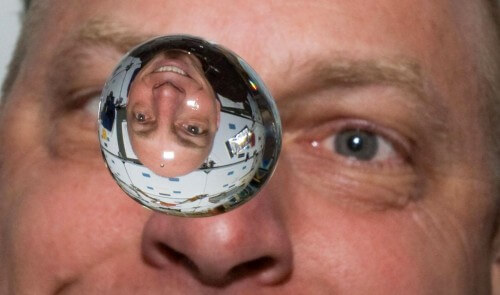In space and on the ground of other planets, even things we don't think about suddenly start to be an important factor - air for breathing and water for drinking and other uses. In the movie "Saving Mark Watney" systems that produce oxygen and recycle water operate in the background, similar to those that exist in reality on the International Space Station

water recycling
There are no lakes, rivers or oceans* on the surface of Mars and sending water from Earth would take nine months. The astronauts who will be on Mars will have to create their own independent water supply. In the movie "Saving Mark Watney" the Ares 3 mission does not waste a drop on Mars and all the water is recycled. Watney must use his creativity to find strange ways to stay hydrated and ensure his survival on the Red Planet.
Even today on the International Space Station not a drop of sweat, tears or even urine is lost. The environmental control system and the life support system recovers and recycles water from any source - urine, hand washing, brushing teeth and other sources and the water that the Water Recovery System (WRS) deems fit to drink. One of the astronauts said it simply: "turning yesterday's coffee into tomorrow's coffee".
Liquids can cause various problems in space. A system like the WRS has to take into account the fact that fluids behave very differently in a microgravity environment. The part of the WRS that processes the urine must be centrifuged to perform the distillation since liquids and gases are not separate as they are on Earth.
NASA continues to develop new technologies for water recovery. The researchers carried out experiments promoting the development of filters that separate the inorganic substances and the non-volatile organic substances, so that they become the most permanent parts of the system. A saltwater desalination system will take care of removing every drop left over, for example, from the distillation of urine. On long missions the crew members will be less dependent on resupply missions and additional water from Earth.
The technology behind the system is currently also used to supply clean drinking water to remote areas of the earth and places affected by natural disasters.
oxygen production
Food, water and shelter are the basic things for survival on Earth, but in space there is another thing that we don't think about too much - oxygen. On Mars Watney can't go outside to breathe air to survive, it's his life to carry his oxygen supply with him wherever he goes. But first he has to produce it. In the "father" he uses an "oxygenator", a system that produces oxygen from the carbon dioxide that is abundant in the Martian atmosphere, with the help of the fuel production system of the MAV - the launch vehicle from Mars.
On the International Space Station, the astronauts and cosmonauts have an oxygen production system, which processes the air in the station on an ongoing basis and provides air for breathing efficiently and stably. The system produces the oxygen through the electrolysis process that splits water molecules into their components - oxygen and hydrogen atoms. The oxygen is released into the spacecraft's internal atmosphere, while the hydrogen is either released into space or fed into the Sabatier system, which produces water from the other byproducts of the station's atmosphere.
Oxygen is produced at a steady rate through a partially closed circuit system that improves the efficiency of water and oxygen use. NASA is now working on a way to extract even more oxygen from these byproducts to prepare for a flight to Mars.
* Note - the article was written on the NASA website before the discovery was announced The salty water that flows in seasonal channels on Mars.
More episodes in the series
- Saving Mark Watney, The Technology – Chapter 1: Home on Mars
- NASA confirms in a press conference: brackish water flows on Mars today
- Be careful of contamination of Mars with terrestrial bacteria - scientists grapple with the question of what the discovery of water on Mars means for life there and for the possibility of landing humans on it
- The next turn is Mars

9 תגובות
This is how drinking water is produced from urine:
https://www.youtube.com/watch?v=V6_oEmG7DzU
As "the general public", I enjoyed reading the article and look forward to more in the future regarding Mars and the technologies for sustaining life there
From time to time there is also a need for basic information for audiences who usually don't get to read scientific news, what's more, it is based on an article on the NASA website and they also know very well the more complex aspects.
The idea of the series is good but in my opinion the execution is lacking. The presentation of things is very basic and there is actually no innovation/detail regarding the topics themselves. Certainly not for anyone who has ever been interested in the space station or read any book on Mars settlement.
Liquid oxygen is just one example. What about the required efficiency of the water recycler compared to today's efficiency?
I felt a similar feeling in the first episode as well.
I apologize for the criticism, Abby, I usually enjoy your posts very much, but this time I really feel that it is intended for a much more uninformed audience than the site's readers.
Read. They hold compressed oxygen in liquid and solid state.
I meant oxygen.
The water idea is clever. You said partial closed circuit. Does he collect the rest from the space or perform a chemical reaction to the material in a liquid/solid state to save volume. I will search on the net. The series is worthy, strength without flattery